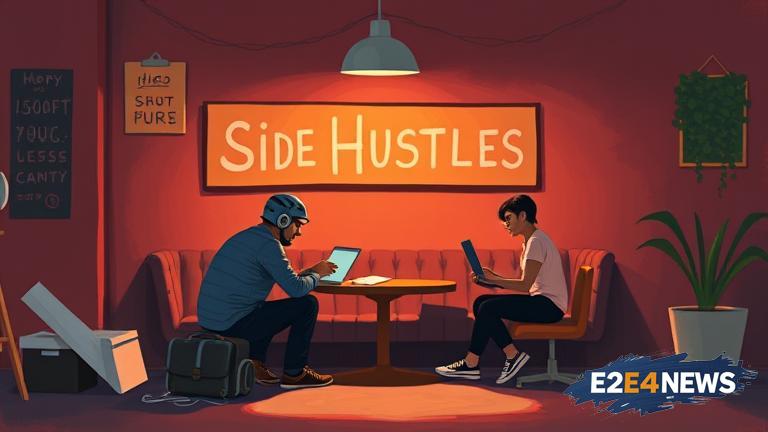The gig economy has experienced significant growth in recent years, with many individuals turning to side hustles to supplement their income. However, with the economy constantly evolving, some side gigs may struggle to remain viable. One such gig is the ride-sharing industry, which has faced increased competition and regulatory challenges. Despite its popularity, the rise of autonomous vehicles and stricter regulations may lead to a decline in demand for human drivers. Another side gig that may struggle is the freelance writing industry, which has become increasingly saturated with talented writers. The abundance of writers has driven down prices, making it challenging for freelancers to earn a decent income. Additionally, the rise of AI-powered content generation may further threaten the livelihoods of freelance writers. The third side gig that may face challenges is the social media management industry, which has become increasingly complex and competitive. With the constant changes to social media algorithms and the rise of influencer marketing, it has become more difficult for social media managers to deliver results for their clients. Furthermore, the increasing demand for specialized skills, such as video production and graphic design, may lead to a decline in demand for general social media management services. The gig economy is not going away, but it is evolving, and side hustles must adapt to the changing landscape. The rise of new technologies, such as blockchain and the Internet of Things, may create new opportunities for side hustles, but it also poses significant challenges. To remain relevant, side hustles must be willing to innovate and adapt to the changing needs of the market. This may involve developing new skills, such as coding and data analysis, or finding new ways to deliver value to clients. The future of side hustles is uncertain, but one thing is clear: only those that are able to adapt and evolve will survive. The gig economy is a dynamic and rapidly changing environment, and side hustles must be prepared to pivot and adjust to the shifting landscape. In conclusion, while some side gigs may struggle to survive, the gig economy as a whole will continue to thrive. It is up to individual side hustles to innovate, adapt, and evolve to remain relevant in the changing economic landscape. The rise of the gig economy has created new opportunities for individuals to earn a living, but it also poses significant challenges. To succeed, side hustles must be willing to take risks, innovate, and adapt to the changing needs of the market. The future of side hustles is bright, but it will require a willingness to evolve and change. The gig economy is not a static entity, but a dynamic and rapidly changing environment that requires side hustles to be agile and adaptable. In the end, the side hustles that are able to adapt and evolve will be the ones that thrive in the changing economic landscape. The gig economy is a complex and multifaceted entity, and side hustles must be prepared to navigate its many challenges and opportunities. With the right mindset and skills, side hustles can succeed and even thrive in the gig economy. However, it will require a willingness to learn, adapt, and evolve. The future of side hustles is uncertain, but one thing is clear: it will be shaped by the ability of individual side hustles to innovate, adapt, and evolve. The gig economy is a rapidly changing environment, and side hustles must be prepared to change with it. The rise of new technologies and the increasing demand for specialized skills will create new opportunities and challenges for side hustles. To succeed, side hustles must be willing to take risks, innovate, and adapt to the changing needs of the market. The gig economy is a dynamic and rapidly changing environment, and side hustles must be prepared to pivot and adjust to the shifting landscape. In the end, the side hustles that are able to adapt and evolve will be the ones that thrive in the changing economic landscape.
